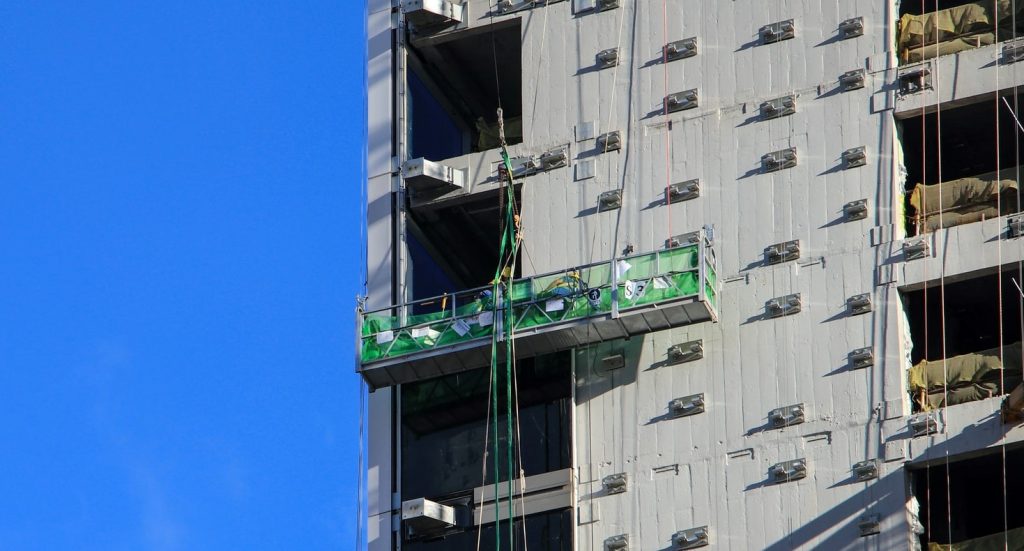Suspended Access Equipment – Fall Protection
Suspended access equipment—Fall protection
Explain dangers
Every worker who uses suspended access equipment (SAE) must have two independent means of support. That way, if the suspension
system on a swing stage, work cage, or bosun’s chair fails, you will still be protected from a fall.
A fall arrest system can be used as the second means of support. It prevents a falling worker from hitting the ground or any object or level
below the work. This can prevent serious injury or death.
Identify controls
A fall arrest system generally consists of a
• Full-body safety harness
• Lanyard
• Energy absorber
• Rope grab
• Lifeline.
The system must be fully rigged, in place, and adjusted correctly. It must be properly attached to an adequate anchor or fixed support and be worn in the following situations:
• While setting up and taking down the SAE and working within 2 metres (6.5 feet) of the perimeter edge
• While getting on and off the SAE
• At all times while on the SAE.
A fall arrest system may be your last line of defence, so make sure it works. Your harness and other fall arrest equipment must have a label
identifying the CSA standard to which it complies.
Inspect the components of a fall arrest system before each use.
INSPECTION
Check the harness for
• Cuts, burns, and signs of chemical damage
• Loose or broken stitching
• Frayed web material
• D-ring and keeper pads showing signs of distortion, damage, or undue wear
• Grommets and buckles showing damage, distortion, and sharp edges.
The lanyard must be securely attached to the harness D-ring by a locking snaphook to keep it from accidentally coming out. On the other end, it must be attached to the rope grab with a locking snaphook.
The lanyard and energy absorber must be free of fraying, kinking, and loose or broken threads.
The hardware should not be deformed, rusty, cracked, or unduly worn. All moving parts must move freely and easily through their full range of movement.
Make sure the rope grab is working, matches the type of lifeline you are using, and has no damaged parts or sharp edges that could cut the
lifeline.
The lifeline must be free of damage, wear, and decay. It must be protected from rubbing and scraping where it passes over corners or edges.
Demonstrate
As you talk, do a hands-on inspection of the fall arrest equipment as indicated above.
Check that workers have taken CPO-approved working at heights (WAH) training within the previous three years and have received sitespecific WAH instruction.
For more information, visit the IHSA website.

